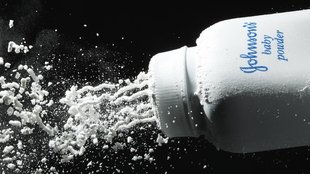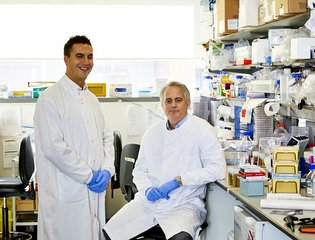Talcum Powder and ovarian cancer: What’s the story?

Is there any truth behind the claims that talcum powder has a connection with ovarian cancer?
As of October 2025, a legal claim has been filed in the UK against Johnson & Johnson regarding a potential link between the use of talcum powder and ovarian cancer incidence. Ovarian Cancer Action is not involved in this claim.
Over recent years, there have been a number of high-profile law-suits in the United States of America against talcum powder manufacturer Johnson & Johnson.
In October, a legal claim was filed in the UK against Johnson & Johnson and its subsidiary Kenvue UK, accusing the company of knowingly selling baby powder containing talc contaminated with asbestos. Over 3,000 people have alleged that they or a family member have developed ovarian cancer or mesothelioma as a result of using Johnson’s Baby Power. Johnson & Johnson deny the claims. Kenvue said in a statement that J&J baby powder "did not contain asbestos, and does not cause cancer".
What does the evidence show?
A major study published in the medical journal JAMA has found no statistically significant relationship between talc use and the development of ovarian cancer. The study is the largest ever analysis addressing the link between using talc for feminine hygiene and development of ovarian cancer.
When looking at research it is important to look at how many people were involved, what the conditions of the trial were, over what period of time it was conducted and who conducted the research e.g. is there was any conflict of interest.
In short, it can be very complicated. Professor Iain McNeish, Director of the Ovarian Cancer Action Research Centre at Imperial College London, helps us understand the science.
Professor McNeish said:
“This is a very well-conducted study by a highly respected group of researchers. Proving causation links of this type is incredibly difficult and the authors are very careful to highlight the potential limitations of their study. However, this research is robust, analysing data from 250,000 women followed for an average of over 11 years, and has concluded there is no statistically significant relationship between talc use and the development of ovarian cancer.”
There have previously been smaller studies with some reporting a slightly increased risk, and some showing no increase in risk of developing ovarian cancer.
Why could talcum powder cause any issues?
Talc is a mineral that is mined from the earth, then ground into a powder that was used in baby powder and other products. Talc and asbestos are naturally found in the earth close together, which means there is a possibility that talc could be contaminated with asbestos when it is mined. We know that exposure to asbestos can cause some cancers, in particular mesothelioma.
For many years baby powder was used not only on babies, but by lots of women to soak up moisture in their groin and in their underwear, either between showers or afterwards to get dry.
The Johnson’s baby powder that is currently found on the shelves doesn’t contain talc at all, as this was swapped for cornstarch in 2023.
Our recommendation
If you have used talcum powder in this way then don’t panic. Across all the research available currently, there is no proven established link that your risk will be higher. Even in the studies that do suggest a link, the risk is only slightly increased. Large numbers of women used talcum powder like this for many years and did not go on to develop ovarian cancer.
We’d recommend being aware of the established risk factors for ovarian cancer and of course making yourself familiar with the symptoms – something we recommend for all women.
What are the current known risk factors for ovarian cancer?
There are a number of things that we know can affect a woman’s risk of getting ovarian cancer. These include family history and genetics, age, lifestyle, menstrual history and contraceptive use. Click here to understand more about these risk factors.
We know that around 20% of ovarian cancers are due to family history or a gene fault like BRCA1/2 or Lynch syndrome. Find out more about hereditary cancer, genetic testing and risk reduction here.


